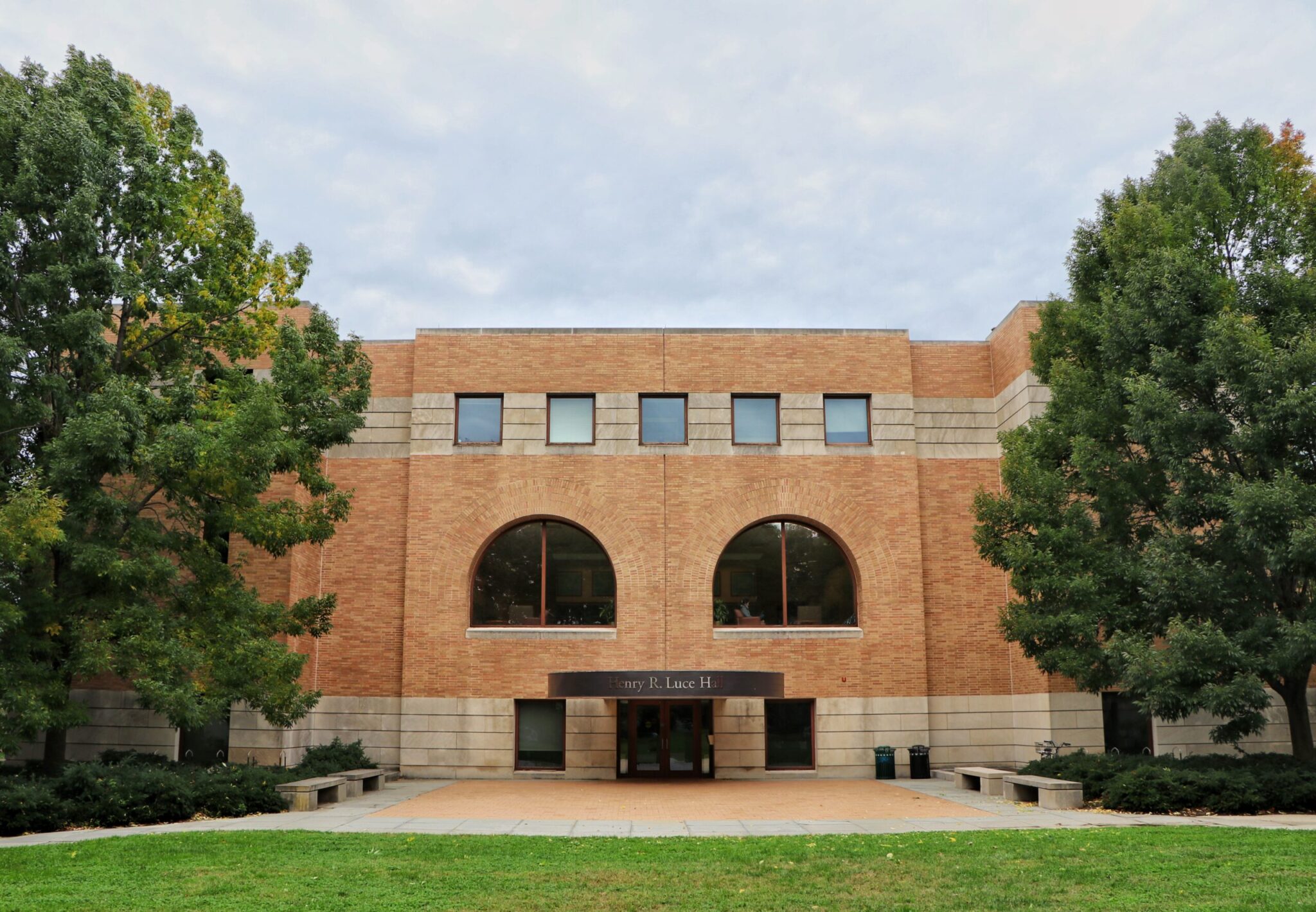Canadian Studies Conference reflects on last year’s record wildfires
Attendees at the conference“Smoke from Canada: Climate Change, Forest Fires, and the Future” took a look at some of the impacts left by last year’s Canadian wildfires.

Yale Daily News
During a summer of toppled records — the hottest month, longest heat streak and warmest water temperatures — Canada’s 45 million acres of scorched forest last year added yet another record-breaking statistic, one of the largest burnt areas in world history.
Organized by its Committee on Canadian Studies, the MacMillan Center’s “Smoke from Canada” conference explored the aftermath of the fires earlier this month. The hybrid event included presentations from School of the Environment researchers and a keynote presentation delivered by guest speaker Pierre Minn, an anthropology professor at the University of Montreal.
“We conceived of our symposium in the aftermath of last summer’s wildfires in Canada and the ensuing smoke that blanketed much of the eastern United States,” Brendan Shanahan, MacMillan Center postdoctoral associate and panel moderator, wrote in an email to the News. “But as we saw with the wildfire smoke last summer, the effects of climate change in Canada are not confined within the country’s geographical boundaries.”
The interdisciplinary event invited School of the Environment researchers to speak about the relations between climate change, wildfire and public health.
Jennifer Marlon, a lecturer at the School of the Environment, addressed the ongoing gaps between wildfire impact and their perception. Even though the Canadian wildfires contributed to roughly 25 percent of global carbon emissions last year, she explained that recent work by the Yale Program on Climate Change Communication suggests growing but still largely inadequate responses from the public. Per Marlon, only 47 percent of Canadians and Americans believe that climate change would harm them personally.
Sebastian Block-Munguia, a research affiliate at the Yale Center for Environmental Law and Policy, discussed how wildfires can also initiate deadly ripples throughout the ecosystem, as their pollutant can be toxic to vegetation by inhibiting plant photosynthesis.
Beginning as early as March 2023, Canadian wildfires picked up during the summer months. Wildfire smoke drifted across America and brought days of hazy smoke throughout stretches of the Northeast and the Midwest. Farms across states hard-hit by the wildfire smoke reported slower-than-usual corn growth last year.
Researchers added that prolonged exposure to smoke comes with a steep toll on human health as well.
“The wildfire smoke is really a public health problem,” Kai Chen, a professor at the School of Public Health, said at the event. “We need government policies to help regulate and help reduce the air pollution.”
Chen, who studies the impacts of climate change on human health, explained that wildfire smoke is rich in fine particulate matter, or PM 2.5. These 2.5 micrometer-sized particles — ranging between 1/20 and 1/30 the diameter of a human hair — can have deadly effects on the nervous system and lungs, he said. Chen added that previous studies have linked PM 2.5 exposure to diseases such as asthma, lung cancer, Alzheimer’s and Parkinson’s.
While long-term health assessments have to follow subjects for years and decades after the wildfires, Chen said that preliminary work is already revealing high costs to public health. Research Chen conducted in collaboration with Columbia University — which has access to records of New York City’s near real-time emergency system asthma visits — detected a 44-percent increase in asthma syndrome visits across all age groups during the days when smoke blanketed the city.
“Climate change is making forest fires worse by extending the length of the fire season, making the weather warmer and drier,” Block-Munguia said. “But also, fires contribute to climate change.”
Per Block-Munguia, fires kickstart a vicious cycle: they release significant amounts of CO2 into the atmosphere, which compounds global warming effects and contributes to drier, less predictable weather conditions. Plants — which rely on CO2 for photosynthesis — could also grow in excesses due to this increase in CO2 release, making them more vulnerable to catching fire.
Even so, he added that fossil fuels remain the overwhelming contributor to PM 2.5 exposure, and enable some of the climate change-related effects responsible for last year’s wildfires. In 2019, PM 2.5 was responsible for 4.1 million global deaths — roughly 1 million of which were caused by fossil fuel combustion, according to Block-Munguia. By comparison, that smoke was responsible for 0.2 million deaths, Block-Munguia said.
Despite its forest growth and natural resources, Canada has been lagging behind peer nations in climate mitigation efforts, Block-Munguia added. He cited recent reports that revealed chronically underreported CO2 emissions from the nation’s oil centers.
According to the panelists, last year’s El Niño cycle likely compounded the scale of the Canadian wildfires. El Niño, during which a warm Pacific Ocean shifts the flow of jet streams, often leads to drier, hotter weather across the Pacific Northwest — perfect conditions for a wildfire, Marlon said. Marlon added that Canada might not expect fires of last year’s size for at least another five to seven years.
Roughly 7,300 forest fires burn through Canada each year.







